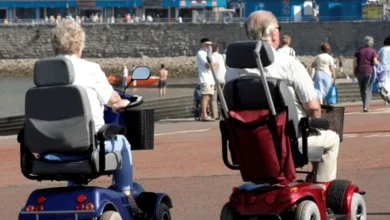Can i get rid of incontinence with a treatment?

Incontinence is a frustrating and often embarrassing condition that affects millions of people around the world. While it is more common in older adults, incontinence can impact anyone at any age. Whether it’s the occasional leak or a more significant problem, the loss of bladder control can have a significant impact on a person’s quality of life.
But the good news is that with the right treatment, it is possible to regain control. In this article, we will explore the different types of incontinence and the treatments available to manage or even eliminate the symptoms.
Types of Incontinence
Before diving into the treatments available for incontinence, let’s take a look at the different types. There are four main types of incontinence, and understanding the distinctions between them is essential in determining the correct course of treatment.
1. Stress Incontinence: This type of incontinence occurs when there is pressure on the bladder due to activities such as coughing, sneezing, or exercising. It is the most common type of incontinence in women, and men may also experience it after prostate surgery.
2. Urge Incontinence: Urge incontinence happens when there is a sudden, strong urge to urinate that is difficult to control. It is often referred to as an overactive bladder, and can be caused by nerve damage, an enlarged prostate, or certain medications.
3. Overflow Incontinence: In this type of incontinence, the bladder doesn’t empty completely, leading to frequent dribbling. It is more commonly seen in men with an enlarged prostate, but women can experience it too.
4. Mixed Incontinence: This type of incontinence involves a combination of stress and urge incontinence, causing both pressure on the bladder and sudden urges.
Incontinence Treatment Options
Once the type of incontinence has been identified, there are several treatment options available to manage or even overcome the symptoms. Here are some of the most effective treatments for incontinence:
- Kegel Exercises: These exercises involve contracting and relaxing the pelvic floor muscles, which can help strengthen the muscles that control urination. Kegels are effective for both men and women and can be done discreetly at any time.
- Dietary Changes: Certain foods and drinks such as caffeine and alcohol can irritate the bladder and cause incontinence symptoms. Eliminating or reducing these items in your diet may help alleviate symptoms.
- Medications: There are several medications available that can help with incontinence, including anticholinergics and beta-agonists. These medications work to relax the bladder muscles or increase bladder capacity.
- Devices: There are several devices available that can help with incontinence, including catheters and penile clamps. These should only be used under the guidance of a healthcare professional.
- Surgery: In some cases, surgery may be necessary to correct underlying issues such as a prolapsed bladder or an enlarged prostate.
Advantages of Treatment
The advantages of incontinence treatment go beyond just regaining control over bladder function. The benefits include:
- Increased confidence and self-esteem: Managing incontinence symptoms can be a significant boost to a person’s mental health and well-being.
- Improved quality of life: No longer having to worry about accidents can provide a newfound sense of freedom and independence.
- Better sleep: Incontinence can significantly impact a person’s sleep patterns, and treating the condition can lead to more restful sleep.






